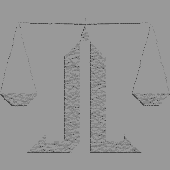

SUPREME COURT OF OHIO (1997)
III. THE OHIO PILOT SCHOLARSHIP PROGRAM DOES NOT VIOLATE THE CONSTITUTION OF THE STATE OF OHIO
The Supreme Court of Ohio has consistently upheld the fundamental right of parents to dictate the "upbringing and education of their children" under the State Constitution. State v. Whisner, 47 Ohio St.2d 181, 212, 351 N.E.2d 750, 768 (Sup. Ct. 1976). See also, Pater v. Pater, 63 Ohio St.3d 393, 397, 588 N.E.2d 794, 798 (Sup. Ct. 1992). Presently, the Cleveland City School District is in such a state of severe crisis that it is difficult, if not impossible for parents to take full advantage of their right to educate their children in the manner in which they see fit.
Under the Ohio State Constitution, Article 1, Section 7, it is "the duty of the General Assembly to pass suitable laws, to protect every religious denomination in the peaceable enjoyment of its own mode of public worship, and to encourage schools and the means of instruction." The State has a duty and an interest in encouraging and facilitating education; to fulfill its duty, it must ensure that the schools within its system meet an adequate educational standard. The Cleveland City School District currently faces an educational and fiscal crisis so severe that the District Court had to order the State to take over its administration. The Ohio Pilot Scholarship Program is a comprehensive legislative initiative that has the potential to solve the considerable problems facing the Cleveland School District. As the final arbiter of the application of the Ohio State Constitution, this Court has the power to reverse the decision of the Tenth District Court of Appeals and uphold the constitutionality of the Pilot Program. In doing so, this Court will enable the State of Ohio to fulfill its duty and serve its interest in providing its citizens with adequate education and means of instruction.
This Court has the power to uphold the challenged legislation under the Constitution of the State of Ohio. The Appellees/Cross Appellants content that the Ohio State Constitution, Article I, Section 7 and Article VI, Section 2, provide broader prohibitions against state funding of religious institutions that the Establishment Clause of the United State Constitution. See Brief of Plaintiffs-Appellants at 32. However, the Ohio Court of Appeals found this argument to be without merit and concluded in this case that both Article I, Section 7 and Article VI, Section 2 are coextensive with the Establishment Clause. Simmons-Harris at 11-12.
Moreover, it is clear from previous holdings by courts in the state that these provisions of the Ohio State Constitution are to be interpreted co-extensively with the parallel provisions of the United State Constitution. See, e.g., Lazarus v. Board of Commrs. of Hamilton County, 6 Ohio Misc. 254, 262-64, 217 N.E.2d 883, 889 (C. P. Hamilton County, 1966) (same analysis applied to challenged statute under Article I, Section 7 of the Ohio Constitution and the First and Fourteenth Amendment of the United States Constitution); Honohan v. Holt, 17 Ohio Misc. 57, 66-67, 244 N.E.2d 537, 543-44 (C. P. Franklin County, 1968) (argument that Article I, Section 7 and Article VI, Section 2 are "more restrictive" than the provisions of the First Amendment expressly rejected by the court).
As such, the arguments advanced in the previous section with respect to the Establishment Clause of the United States Constitution apply with the same force to the applicable provisions of the Ohio State Constitution.
The Ohio Pilot Scholarship Program is therefore valid under the Ohio State Constitution.
CONCLUSION
The Ohio Pilot Scholarship Program is a legislative initiative whose primary purpose and effect is to solve the problems facing the Cleveland City School District. Any benefits that indirectly flow to sectarian institutions through this neutral program do so as a result of voluntary and independent choices made by individual parents. For the foregoing reasons, the Pilot Program is a constitutional exercise of State power and the decision of the Ohio Court of Appeals should be reversed.
|
Respectfully submitted, Nathan J. Diament, Counsel for the Amicus Curiae INSTITUTE FOR PUBLIC AFFAIRS - UNION of ORTHODOX JEWISH CONGREGATIONS of AMERICA 333 Seventh Avenue New York, N.Y. 10001 (212) 613-8123 Pam Scheininger (Law Student) |
1 | 2 | 3 | 4 | 5 | 6

DISCLAIMER
|
|
Page 6 of 6 |
|